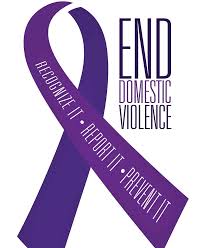
Find Essential Domestic Violence Support Resources
Breaking the Chains of Silence: Domestic Violence Support and Resources
Welcome to our comprehensive guide on supporting domestic violence survivors. Here, you’ll find valuable information, resources, and empowerment strategies to aid those affected by domestic violence. Join us in fostering a supportive community and empowering survivors on their journey towards healing and resilience.

In the quiet corners of some homes, behind closed doors, a sinister reality often lurks – domestic violence. It is an insidious force that knows no boundaries, affecting people of all backgrounds, ages, and walks of life. While many turn a blind eye to the pain that echoes within the walls of countless homes, it is time to break the chains of silence and address this pressing issue head-on.
Overview of Domestic Violence:
Domestic violence, often shrouded in secrecy, is an epidemic that affects millions worldwide. Beyond the physical scars, it leaves lasting emotional and psychological wounds that can persist for generations. It is crucial to recognize that this issue extends far beyond the confines of gender stereotypes; men, women, and children can all be victims.
Domestic violence is not merely a series of isolated incidents; it is a cycle that repeats itself without intervention. The cycle typically includes tension-building, explosion, and a period of remorse or reconciliation. Breaking free from this cycle requires a collective effort from society, as well as individuals, to foster an environment where survivors can seek help without fear of judgment.
The Impact of Domestic Violence on Mental Health:

The toll of domestic violence on mental health cannot be overstated. It can be profound and long-lasting. Survivors often experience a range of psychological effects, anxiety, depression, post-traumatic stress disorder (PTSD), low self-esteem and other mental health issues. Additionally, the constant fear and stress associated with living in an abusive environment can lead to difficulties in concentration, sleep disturbances, and even suicidal thoughts.
Here are several ways to tackle this pervasive problem:
Addressing the issue of domestic violence requires a multifaceted approach involving individuals, communities, institutions, and governments. The first step towards eradicating domestic violence is breaking the chains of silence. We must create a culture that encourages survivors to speak out, seek help, and be met with empathy rather than judgment. Community support, awareness campaigns, and educational programs are essential in fostering an environment where survivors feel empowered to break free from the cycle of abuse.
Raising Awareness:
- Community Outreach programs and awareness campaigns to educate the public about the signs of domestic violence, available resources, and how to support survivors.
- Create support groups within communities where survivors can share experiences, receive encouragement, and build a network of understanding.
- Encourage community policing initiatives that involve residents and law enforcement working together to address domestic violence concerns.
- Utilize various media platforms to share stories, statistics, and information about domestic violence, promoting a culture of openness and empathy.
Educating the Next Generation:
Preventing domestic violence starts with education. By instilling values of respect, empathy, and healthy communication in the younger generation, we can break the cycle before it begins.
- Schools, families, and communities must work together to teach children about consent, boundaries, and the importance of treating others with kindness and dignity.
- Implement educational programs in schools to teach children about healthy relationships, consent, and conflict resolution, fostering a culture of respect from an early age.
- Provide training for employees to recognize and address signs of domestic violence, creating supportive environments in workplaces.
Legal Measures and Domestic Violence:
Efforts to combat domestic violence must extend beyond awareness to include legal measures and robust support services. Stricter laws, faster response times from law enforcement, and accessible shelters are crucial components of a comprehensive approach.
- Counseling and therapy services play a vital role in helping survivors heal and rebuild their lives.
- Advocate for and support the implementation of stronger legal measures against domestic violence, including protective orders, faster legal proceedings, and severe penalties for offenders.
- Train law enforcement personnel to handle domestic violence cases with sensitivity, ensuring a victim-centered approach.
Support Services and Domestic Violence:
- Establish and maintain shelters and safe spaces for survivors, providing a refuge where they can escape from immediate danger.
- Offer accessible and affordable counseling services for survivors and their families, addressing the mental health impacts of domestic violence.
Employer Involvement:
- Implement workplace policies that support employees experiencing domestic violence, including flexible scheduling, paid leave, and employee assistance programs.
- Train managers and HR personnel to identify signs of domestic violence and provide appropriate support to affected employees.
Empowerment Programs:
- Support programs that empower survivors economically, helping them gain financial independence and reduce barriers to leaving abusive relationships.
- Offer workshops that focus on developing skills and confidence, enabling survivors to rebuild their lives after leaving an abusive situation.
Government Initiatives:
- Allocate resources and funding for organizations providing support services to survivors, ensuring they have the necessary tools to assist those in need.
- Advocate for policies that address systemic issues contributing to domestic violence, such as gender inequality and economic disparities.
Technology Solutions:
- Develop and promote hotlines, apps, or other technological solutions that provide immediate assistance and resources for individuals experiencing domestic violence.
Cultural Shift:
- Work towards challenging and changing cultural norms that perpetuate gender-based violence, promoting equality and respect for all individuals.
- Encourage celebrities and influencers to use their platforms to speak out against domestic violence, reaching wider audiences and influencing cultural attitudes.
Addressing domestic violence requires a collective effort involving individuals, communities, organizations, and policymakers. It’s important for survivors to seek support and counseling to address these mental health challenges and begin the healing process. It is also crucial to destigmatize seeking help for mental health concerns, ensuring that survivors receive the support and care they need to heal and rebuild their lives. By combining these strategies, society can work towards creating an environment where domestic violence is not tolerated, survivors are supported, and potential perpetrators are held accountable.
Disclaimer: The information provided in this content is for general informational purposes only. It is not intended as medical or healthcare advice, diagnosis, or treatment. Always seek the advice of a qualified healthcare professional with any questions you may have regarding a medical condition or healthcare decisions.

